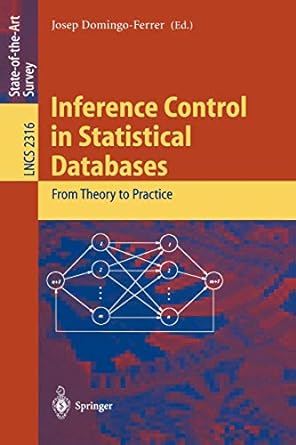Answered step by step
Verified Expert Solution
Question
1 Approved Answer
Exercise 1 . A Rank - Based Type Systems for the Stack Language We extend the simple stack language from Homework 3 ( Exercise 1
Exercise A RankBased Type Systems for the Stack Language
We extend the simple stack language from Homework Exercise by the following three operations.
DEC decrements the topmost element on the stack
SWAP exchanges the two topmost elements on the stack, and
POP k pops k elements of the stack.
The abstract syntax of this extended language is as follows.
type Op LD Int ADD MULT DUP DEC SWAP POP Int
type alias Prog List Op
Even though the stack carries only integers, we can identify types for the stack operations that capture the con
straints on the number of arguments they need on the stack. Specifically, we can define a type system that assigns
ranks to stacks and operations, ensuring that a program does not result in a rank mismatch.
The rank of a stack is given by the number of its elements. The rank of a stack operation is given by a pair of
numbers n m where n is the number of elements taken from the top of the stack and m is number of elements
put onto the stack. The rank for a stack program is defined to be the rank of the stack that would be obtained if
the program were run on an empty stack. A rank error occurs in a stack program when an operation with rank
n m is executed on a stack with rank k n In other words, a rank error indicates a stack underflow.
a Use the following types to represent stack and operation ranks.
type alias Rank Int
type alias OpRank IntInt
First, define a function rankOp that maps each stack operation to its rank.
rankOp : Op OpRank
Then define a function rankP that computes the rank of a program. The Maybe data type is used to capture
rank errors, that is a program that contains a rank error should be mapped to Nothing whereas ranks of
other programs are wrapped by the Just constructor.
rankP : Prog Maybe Rank
CS Spring Homework Types
Hint. It might be helpful to define an auxiliary function rank : Prog Rank Maybe Rank and define
rankP using rank.
b Following the example of the function evalTC defined on slide of the type system slides define a function
semTC for evaluating stack programs that first calls the function rankP to check whether the stack program
is type correct and evaluates the program only in that case. For performing the actual evaluation semTC calls
the function semProg as defined in the previous homework; see the file HWSemantics.elm
However, the function semProg called by semTC can be simplified, especially, its type. What is the new type
of semProg, and why is it safe to use this new type?
Step by Step Solution
There are 3 Steps involved in it
Step: 1

Get Instant Access to Expert-Tailored Solutions
See step-by-step solutions with expert insights and AI powered tools for academic success
Step: 2

Step: 3

Ace Your Homework with AI
Get the answers you need in no time with our AI-driven, step-by-step assistance
Get Started


